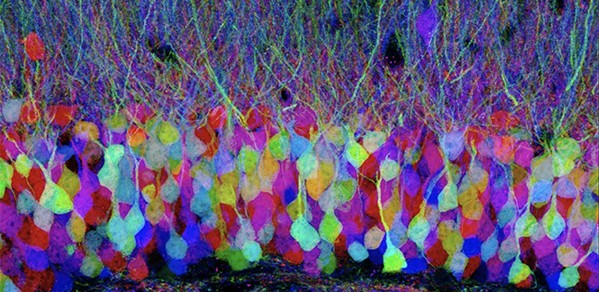
Increasing the size of neural circuits in the brain can boost learning performance, but this increased connectivity also has the potential to impede learning, new research has revealed.
In short, adding neurons and connections to a brain can help learning – up to a point. After that, an increase in size could actually impair learning.
Dr Timothy O'Leary
Cambridge neuroscientists predict that there is an ‘ideal’ brain circuit size suited to carrying out particular tasks. The study, published in the journal PNAS, looked at how neural circuits can use additional connectivity to achieve faster and more precise learning.
The research showed that adding apparently ‘redundant’ neurons (cells that make your brain work) and synaptic connections (that enable information to flow from one neuron to another) to a network is, in fact, a double-edged sword. On the one hand an increase in connectivity can make a task easier to learn. On the other hand, due to inherent noisiness in signal-carrying connections, increased connectivity will eventually hinder both learning and task performance once a circuit exceeds a certain size. These findings suggest a new potential reason why excessive numbers of noisy connections can lead to learning disorders that are associated with brain hyperconnectivity, including some developmental forms of autism.
Dr Timothy O’Leary, Lecturer in Information Engineering and Medical Neuroscience, who led the study, said: “Our research shows that adding ‘spare’ or redundant connections to brain circuits can, in fact, boost learning performance. These additional connections – which don’t appear strictly necessary for brain function – can make a new task easier to learn.
“However, we found that if each new pathway adds ‘noise’ to the signal it transmits, the overall gain in learning performance will eventually be lost as a circuit increases in size. We can predict, therefore, that there is a so-called ‘sweet spot’, an ideal brain circuit size that suits a particular task. While evidence points to the fact that larger brains tend to be found in species with higher cognitive function and learning ability, brain circuit size may ultimately be constrained by the need to learn efficiently with unreliable synapses. In short, adding neurons and connections to a brain can help learning – up to a point. After that, an increase in size could actually impair learning.”
The research was funded by a European Research Council (ERC) grant FLEXNEURO (716643).
Reference:
D. V. Raman; A. Perez Rotondo; T. O’Leary, ‘Fundamental bounds on learning performance in neural circuits’. PNAS (2019). DOI: 10.1073/pnas.1813416116

